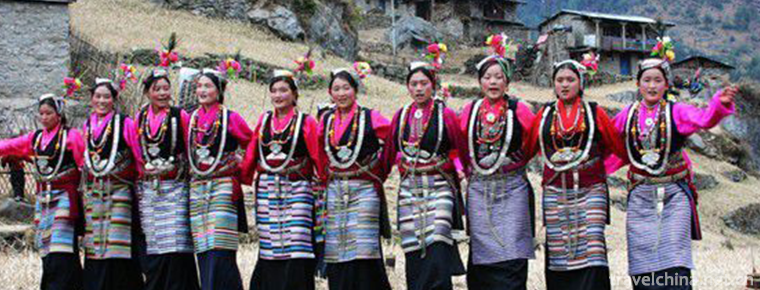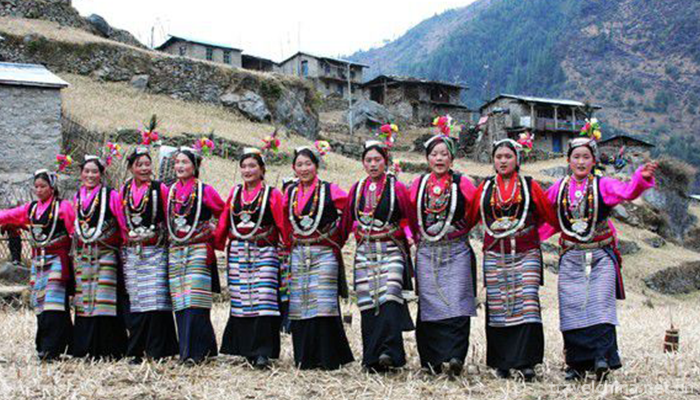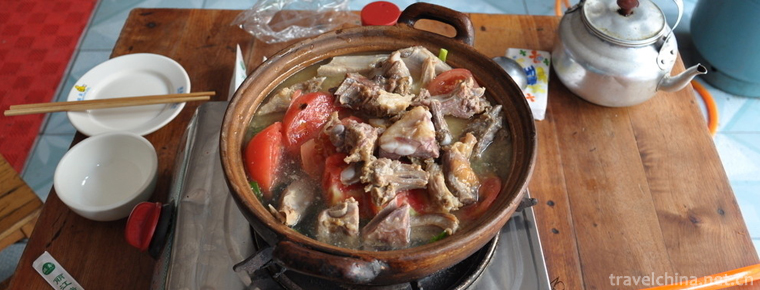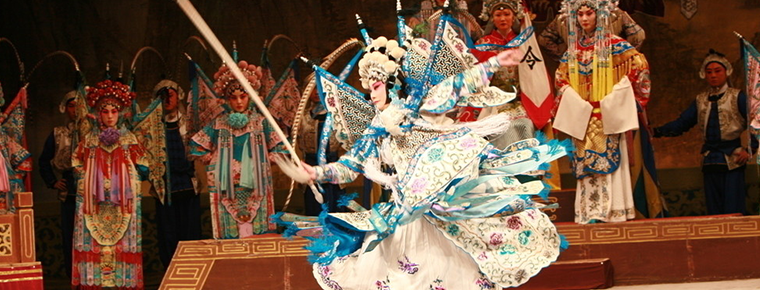2018-10-17

- By ChinaWiki.net
- Chinese Edition
- 2019-04-16
Chentang Sherpa Singing and Dancing
Chen Tang Sherpa Song and Dance is a traditional folk song and dance in the Sherpa community of Tibet. Accompanied by "Zhanlie" (Six Strings) and "Biwang" (Huqin). Generally, it is held on festivals, meetings, holidays and visitors'visits. The venues are of unlimited size. Men play the piano and play the huqin, while women dance around the bonfire with music.
On May 23, 2011, the "Chen Tang Sherpa Song and Dance" declared by Dingjie County of Tibet Autonomous Region was listed in the third batch of national intangible cultural heritage list with the approval of the State Council.
historical origin
Sherpas live mainly in the alpine areas of northern Nepal. The Sherpas in China mainly live in Lixin Commune (including Xuebgang) at Zhangmu Port on the Sino-Nepalese border and in Chentang District of Dingjie County. There are more than 1200 people living in our country. The grammatical structure of the Sherpa language in Lixincun is basically the same as that of the Tibetan language. The Sherpa language in Chen Tang is quite mixed, including Tibetan, Nepalese and local languages.
Sherpas have only names, no surnames. Their names are similar to those of Tibetans, but they do not have house names. Caste. There are five Sherpa castes in Lixin Village, namely Selba, Garza, Salaga, Jamba and Ongba. Chen Tang is divided into two kinds, namely Tigawa and Congbawa.
artistic characteristics
Tangshaerba singing and dancing is a kind of self-entertaining folk collective singing and dancing which has a long history and is deeply loved by Sherpa people in Chen Tang Town, Dingjie County. The accompanying instruments are "Zhanlie" (Six-string Qin) and "Biwang" (Huqin).
The majority of singers and dancers are women. Generally, it is held on festivals, meetings, holidays and visitors'visits. The venues are of unlimited size. Men play the piano and play the huqin, while women dance around the bonfire with music. When singing and dancing, people put their arms around each other in a circle or semi-circle, singing one song and the other. At the beginning, it sings and dances gently, then moves around with a slow melody, then speeds up gradually to the mid-board dance, then to the Allegro. At this moment, with the dancer's voice, the dance reaches its climax, and finally ends in a cheerful and enthusiastic atmosphere.
When singing and dancing, women should dress up: wear black "Shu Shu". They wear hats decorated with flowers and peacock feathers on their heads. They wear necklaces with more than 200 silver rings around their necks, six small silver strings on their chest, silver belt around their waists, big white conch on their wrists, Aaron on their ears and Gawu (gold and silver ornaments) on their breasts. The jewelry is shining, tinkling and very touching when dancing.
Dance emphasizes gesture, footwork and waist, hip swing and bending. The lyrics are divided into traditional words and new words. The traditional lyrics mainly include ancient legends, farming and animal husbandry skills, religious carols, architectural techniques, etc. The newly compiled lyrics mainly praise the beautiful scenery of mountains and rivers and love between men and women. In addition, they also contain satire, humor and admonishment. The lyrics of the songs are mostly Tibetan, including six, seven, eight and so on. The songs have four, six, eight or more sentences and multi-paragraph styles.
Sherpa Marriage Custom
Sherpas have no words, and singing and dancing carry too much history of Sherpas. Even living in a closed mountain, Sherpas still use moving Sherpa songs and dances to show their love for life. All the good things in the world are the objects of their singing and dancing. They will also hold Sherpa's unique Manga wine to welcome guests from afar. Chentang Sherpa singing and dancing is deeply rooted in the local people, and is a popular singing and dancing variety with strong regional characteristics in Xigaze area.
On May 23, 2011, the "Chen Tang Sherpa Song and Dance" declared by Dingjie County of Tibet Autonomous Region was listed in the third batch of national intangible cultural heritage list with the approval of the State Council.
Inheritance significance
Sherpas have no words, and singing and dancing carry too much history of Sherpas. Even living in a closed mountain, Sherpas still use moving Sherpa songs and dances to show their love for life. All the good things in the world are the objects of their singing and dancing. They will also hold Sherpa's unique Manga wine to welcome guests from afar.

Ask a Question
Your email address will not be published.



0 Questions